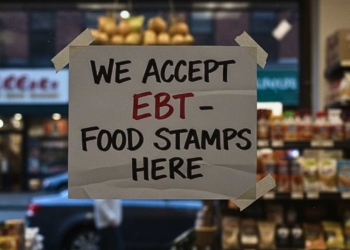In 2026, millions of taxpayers in the United States could experience an increase in their tax refunds for the 2026 tax year. This is due to inflation adjustments implemented by the IRS and provisions contained in the legislation known as “One Big Beautiful Bill” (OBBBA), signed into law in July 2025 by President Donald Trump.
The regulations introduce temporary deductions and an expansion of several tax credits. Official projections estimate that these changes will generate approximately $91 billion in tax relief, of which $59 billion will be in the form of direct tax refunds.
Who’s getting bigger tax refunds in 2026?
The groups that would benefit most include middle- and upper-income families, individuals whose income comes from tips, and senior citizens. However, the impact will not be uniform for all taxpayers, as it will be determined by individual circumstances related to employment status, family composition, and income level.
The announced changes involve reducing the taxpayer’s taxable income or granting credits that directly decrease the tax liability. This mechanism can result in a lower amount of taxes payable and, in cases where withholdings made during 2025 exceed the final amount owed, in a larger refund.
Among the most significant changes is the increase in the standard deduction. For the 2025 tax year, filed in 2026, this deduction is set at $16,100 for single or married individuals filing separately, $32,200 for married couples filing jointly, and $24,150 for heads of household.
Deductions introduced by Trump’s OBBBA
The OBBBA law has introduced a series of temporary above-the-line deductions, effective from 2025 to 2028. These deductions are available even to taxpayers who opt for the standard deduction, and are targeted at specific employment sectors.
They include the ability to deduct up to $25,000 in tip income, up to $12,500 in overtime pay, and up to $10,000 in interest on loans for the purchase of new vehicles during 2025. Additionally, an extra $6,000 deduction is available for taxpayers age 65 and older.
The Child Tax Credit increases to $2,200
The amount of tax savings from these deductions is directly linked to the taxpayer’s tax bracket, which ranges from 10% to 37%. Additionally, the Child Credit has been expanded to $2,200 per qualifying child, of which up to $1,700 is refundable. This credit is designed to support families with moderate incomes.
In parallel, the Earned Income Tax Credit (EITC) has seen its maximum amounts increased, reaching $8,231 for families with three or more children, $7,316 for two children, $4,427 for one child, and $664 for those without children.
Expansion of other existing credits and adjustments in seniority lists
Other tax credits have also been expanded. The adoption credit has a maximum cap of $17,670, with a refundable portion of up to $5,000, and begins phasing out at an adjusted gross income of $265,080.
Additionally, the limit on the state and local income tax deduction, known as the SALT deduction, has been raised, benefiting taxpayers in high-tax jurisdictions who choose to itemize deductions. Furthermore, income tax brackets have been adjusted to reflect inflation, a move that reduces the effective tax rate for a large segment of the tax population.
The combination of these factors suggests that the 2026 tax season could set a record for the total volume of tax refunds distributed. The interplay between expanded deductions, expanded credits, and adjustments to tax brackets creates a tax landscape unlike that of previous years.
Taxpayers’ ability to understand and apply these new provisions will largely determine their final benefit. Next year’s tax return will require particular attention to the new forms and requirements.
Guidelines for requesting a refund
The process for claiming a tax refund is done by filing an annual tax return. The first step involves gathering the necessary financial documents, such as W-2 forms for salaried employees, various 1099 forms for self-employment income or tips, receipts for deductible expenses like car loan interest, and accurate information about dependents.
For those who are looking to maximize their 2026 tax refund, it’s recommended to review and, if necessary, adjust payroll withholdings during 2025. This is done by updating Form W-4 at the employer where services are rendered. The IRS is scheduled to release updated 2026 guidance and forms in August 2025, so acting promptly allows for more accurate withholding adjustments and helps avoid overpaying taxes.
The deadline for submitting the declaration is April 15, 2026, with the option to request an extension that extends the deadline until October 15 of the same year.





